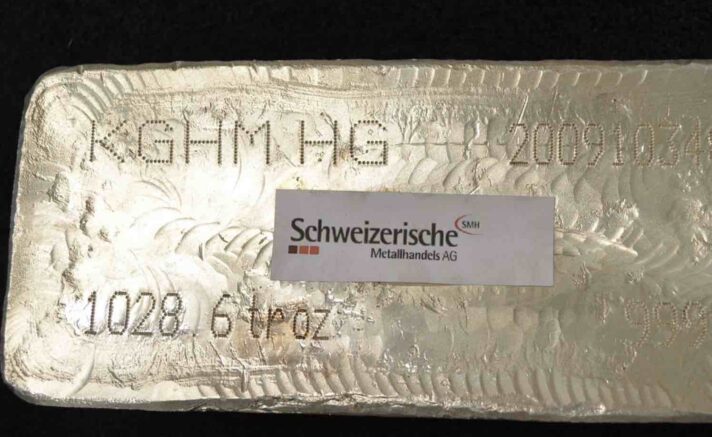A Great Speculative Investment For 2018
Risk.
That’s what most people think of when they hear about a speculative investment.
When you make a speculative investment, you’re essentially hoping to profit from a price increase. You make the investment because you have some hunch or theory that your profit will be so large that you are willing to take a risk.
A perfect example of this happened during the mid 1800’s in California. People from around the world sold most of their possessions, packed up what they had left, and then headed towards the Golden State.
These people were speculators. They were taking a massive gamble by leaving their home to pursue the dream of striking it rich in California’s gold country.
Ironically, there is another gold rush that may be on our horizon.
Gold is looking very attractive right now. With a weakening US dollar, inflation looking to make a come back, and everyone focused on crypto, gold seems to be the one safe haven that everyone is ignoring.
But, gold is not the speculation that I’m talking about. Instead, I’m talking about gold’s little brother – silver.
Silver is a very interesting element. Not only do we use it as a store of wealth, but it’s also used in MANY industries. Silver is used is all kinds of different applications, including water filtration, electronics, solar panels, anti-microbial clothing, cell phones, and medical instruments.
So, not only do we hoard silver for wealth, but we also consume it. Theoretically, the supply is always in demand.
But, I don’t want to dive into the various use cases, or the supply and demand economics.
Instead, I’m just going to show you some interesting trends and how silver may be a great speculative investment.
And, to top it off, there is very little downside risk in this speculation.
First, let’s just look at a price chart that has been adjusted for inflation.
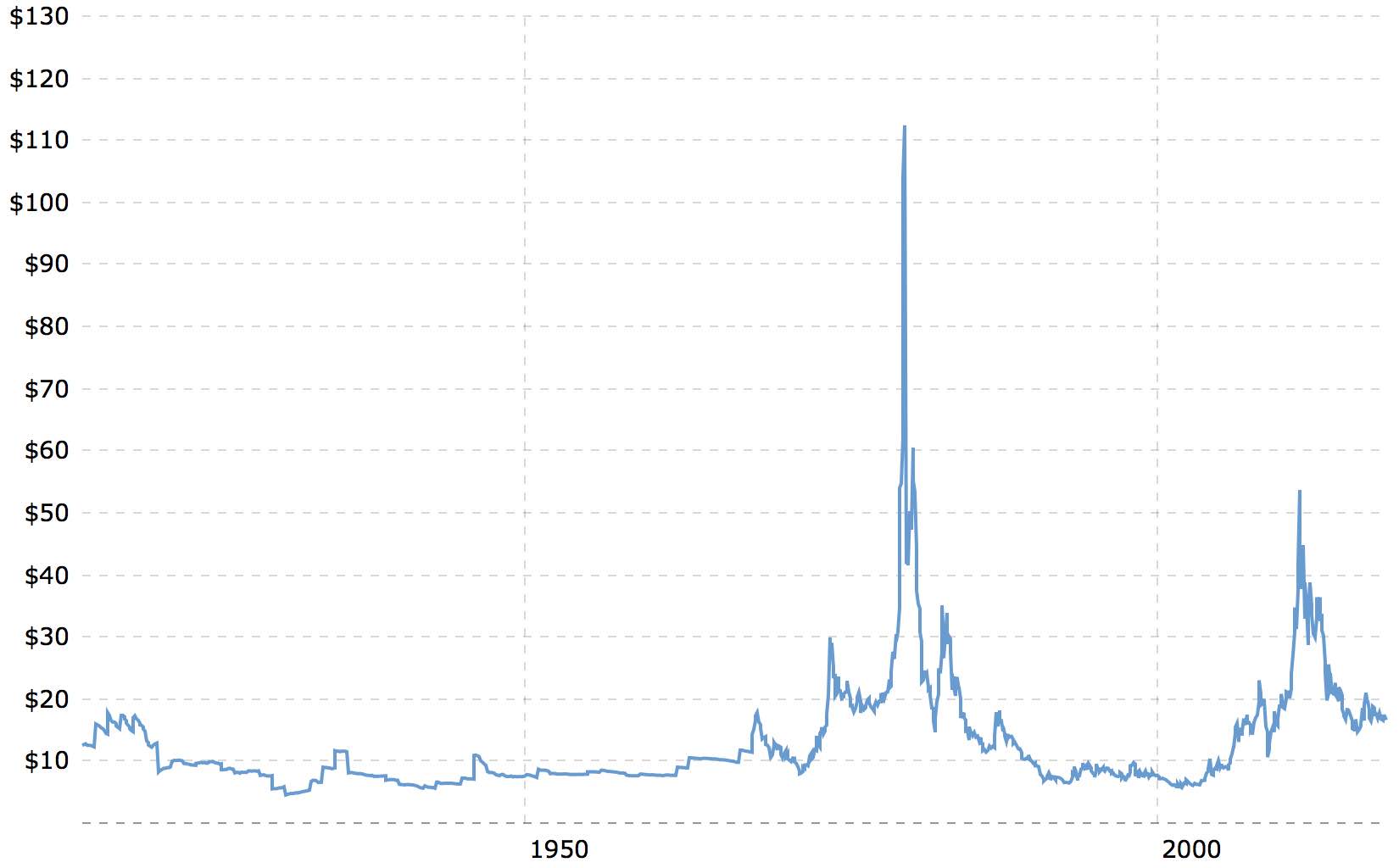
Except for the large spikes in 1980 and 2011, you can see that the price has hovered around the $10 to $20 mark. Right now, in early 2018, it’s trading at about $17 an ounce.
Now, let’s look at that same chart that is NOT inflation adjusted.
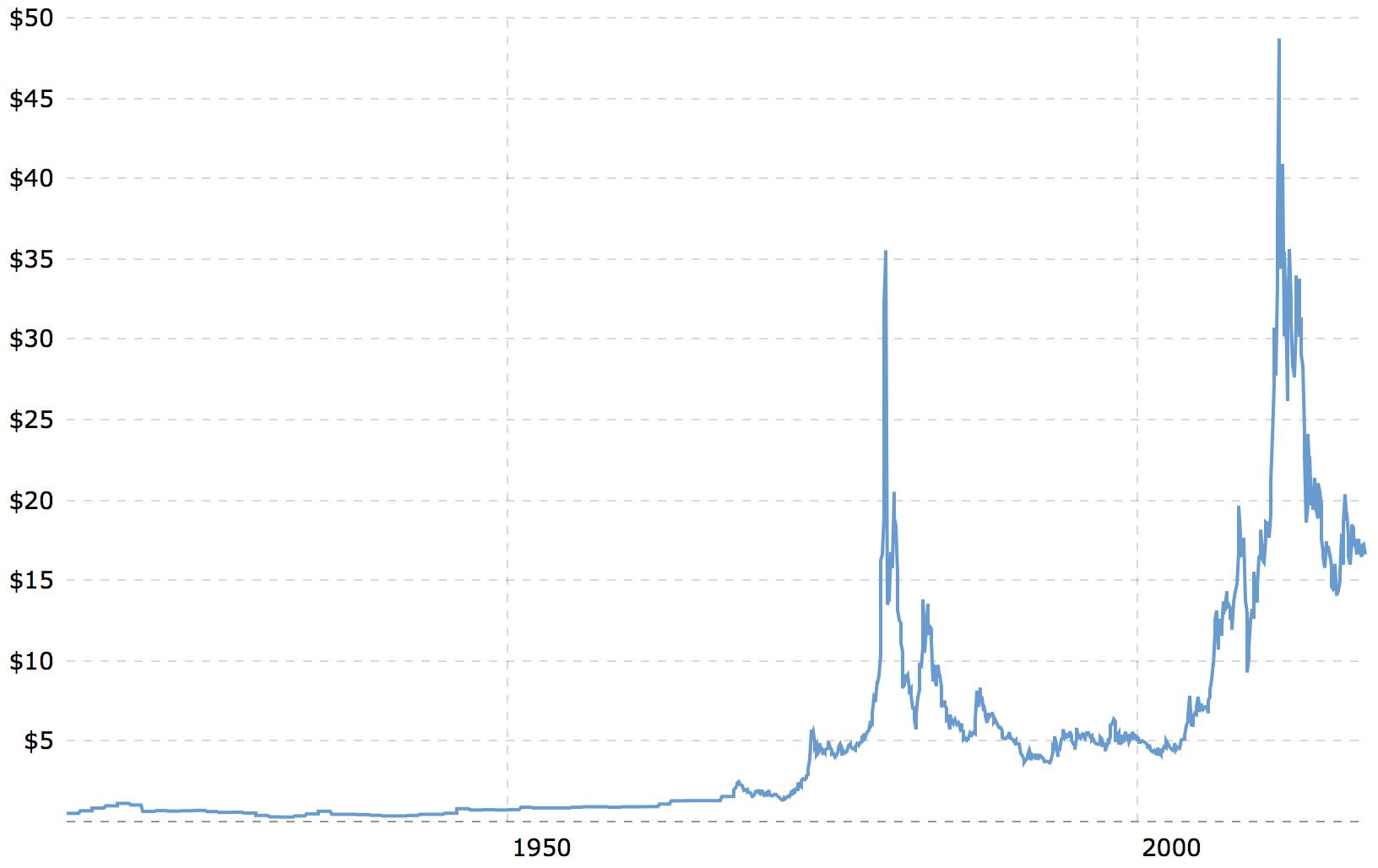
If we assume that we have been in a very deflationary period, with extremely low interest rates, then one could easily argue that inflation is on the horizon.
Like I said before, I don’t want to dive too much into our current market situation. I want to just show you some trends that could offer huge upside potential.
That said, have a look at the silver price compared to the gold price:
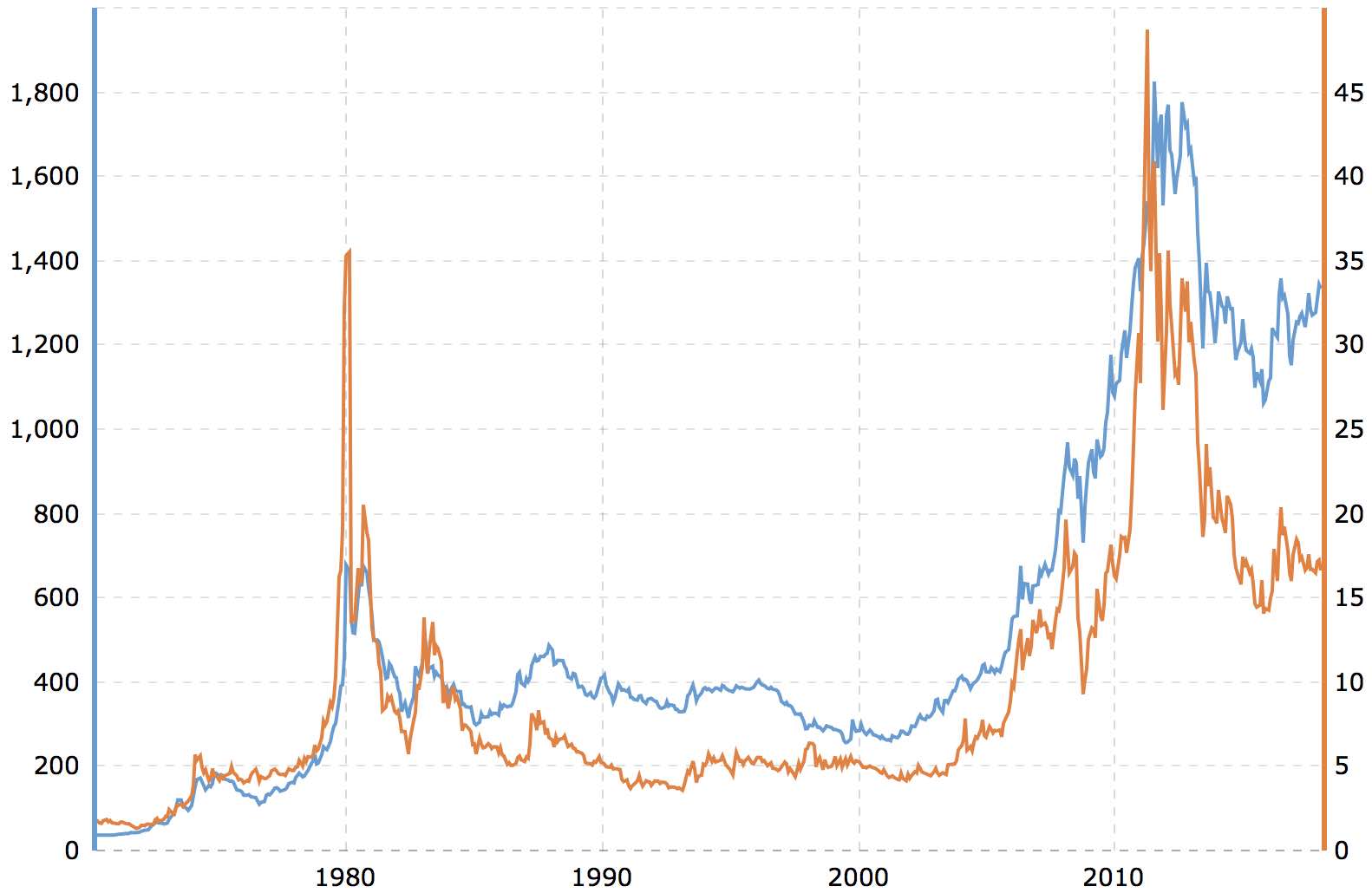
As you can see, their prices normally stay in sync with each other. As the price of gold goes up, so does silver.
You can see the left y-axis on the above chart is the price of gold, while the right y-axis is the price of silver. Notice how silver moves violently up when there is a strong move in gold?
Even though both silver and gold seem to be tracking each other, silver is actually making a larger move.
For example, in November of 2015, gold was priced at $1,060, while silver was at $14. Then, in July of 2016, gold was up to $1,350 and silver was at $20. That is a 27% gain for gold and a 42% gain for silver.
Which would you rather have? A 27% gain or a 42% gain?
If you go back and test these moves, silver almost always has a larger percentage move than gold.
And that brings us to the next data point: The gold to silver ratio.
The gold to silver ratio is a way to compare the prices of the two metals to each other. The ratio is determined by how many ounces of silver it takes to buy one ounce of gold.
If the ratio is low, then it means gold is cheap compared to silver. That’s because it takes less silver to buy gold.
If the ratio is high, then it means silver is cheap compared to gold. That’s because it takes more gold to buy silver.
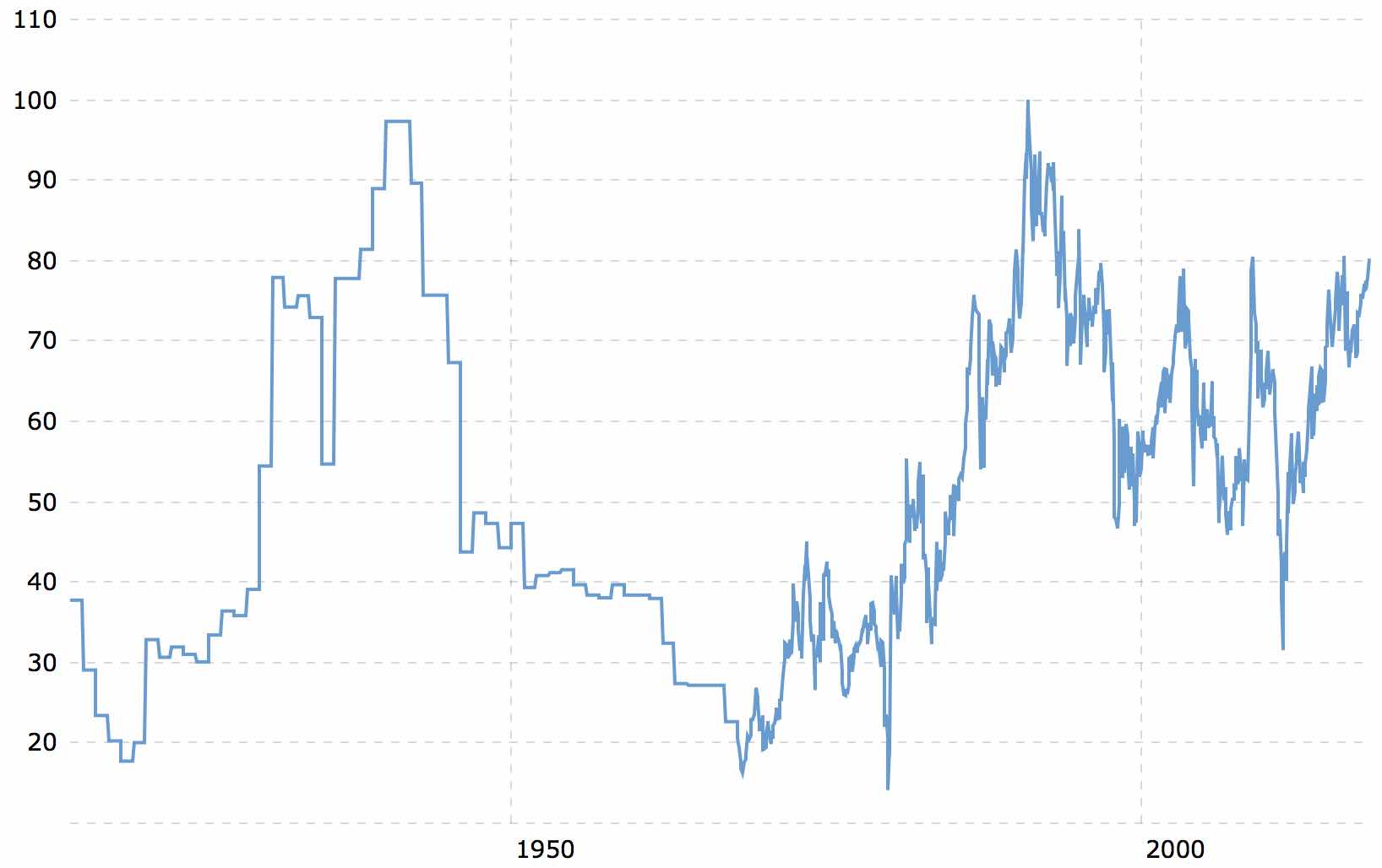
As you can see from the above chart, the ratio just crossed 80, which rarely happens. It’s only happened during 3 other time periods in the last one hundred years.
Right now, silver is cheap compared to gold.
If you consider the downside risk, things get very interesting. Silver has not dipped below $10 for the past ten years.
But, let’s pretend it does go below $10… first off, all of the metrics I just showed above would really get crazy. Second, if it did go below $10, you’d be down about 50% on your investment. That’s not a great spot to be in.
However, if you consider that silver has been used as a store of wealth for thousands of years, then you can just hold on to it until it recovers. (Or, if you’re a crypto fan, you can HODL…)
So, as a speculation, silver is looking pretty attractive.
And here is the thing that I like about silver the most: Anyone can invest in silver.
- You don’t have to be rich. You can buy tiny amounts or large amounts.
- You can buy ‘paper silver,’ which is essentially means you can invest in silver through a brokerage account, just like you’re buy a stock.
- You can buy physical silver, which means you literally hold physical silver.
- You can buy physical silver that has added collectible value if it’s in the form of a currency or jewelry.
- You can buy silver, store it somewhere, and forget about it. Unlike many ‘trendy’ investments, silver has been around as valuable asset for thousands of years. It’s probably not going to change much in the future. So, you can buy it and not have to worry about off-loading it as soon as it gets unpopular.
If you’re just starting out, you should buy physical silver first. Not only is this the preferred way of owning silver, as you actually have physical possession, but it also gives you a great understanding about why it’s valuable.
Once you understand silver a bit better, you can get fancy and start to trade it just like a stock. You can add leverage to different trades, which can make you enormous gains. But, only do this once you fully understand the silver market. (If you can figure out the trends, there is a lot of money to be made!)


